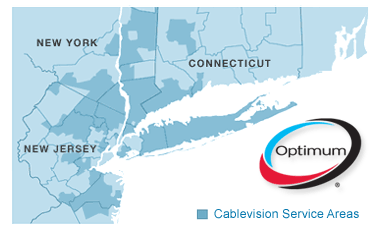Despite the tight economy for most Americans, executives at some of the nation’s largest cable players will enjoy millions from their contract extensions, bonuses, and eye-popping stock options that could net upwards of $10 million more for a select few. And you thought your rate increase was due to “increased programming costs.”
Cablevision is where the real Money Party has just gotten started. The top three executives alone could receive a combined $50,000,000 next year… that is fifty million dollars, just for running a regional cable company with just north of three million subscribers.
Here is the breakdown:
Cablevision CEO James Dolan: Cablevision has always been under the control of the Dolan family, who own a controlling interest in the stock. James Dolan gets a five-year extension in his contract, with a base salary of $1.5 million per year plus a bonus of up to four times that amount. In 2010, Dolan is also entitled to an additional bonus package in cash and equity worth around $7 million. He is also on track to get that same bonus each of the next five years, but only if the company does well. Dolan is also CEO of Madison Square Garden/MSG/Radio City Music Hall. For managing those assets, he’ll receive an extra $500,000 in salary, a bonus up to four times that amount, and an extra cash and equity bonus expected to be about $1.75 million per year.
Dolan founded Cablevision in 1973.
Cablevision Vice Chairman Hank Ratner: Ratner gets a base salary of $500,000 a year, an annual bonus up to four times that salary, $1.2 million annually for his role with MSG, and extra cash and equity around $1.4 million annually. And just because he’s a great guy — a one-time stock award worth $1.75 million due on March 31, 2010. But wait, there’s more. He also deserves extra cash and equity as MSG’s chief, targeted at $5.4 million in 2010 and each year thereafter.
Ratner joined Cablevision in 1987. Ratner helps to set corporate direction and strategy, and is the primary executive overseeing major business partnerships and transactions. Prior to being appointed Cablevision vice chairman, he served as vice chairman of Rainbow Media Holdings, the company’s programming subsidiary.
Tom Rutledge, Cablevision’s chief operating officer: He’ll get $1.63 million annually in salary, plus an annual bonus up to four times that amount. He’s a special guy, so he also gets a “special payment” of $7.75 million within ten days of putting his ‘John Hancock’ on the new contract. Call it a signing bonus. But he also gets extra cash and equity compensation aiming at $6.8 million in 2010.
Cablevision isn’t alone is spreading around the walking around money.
Liberty Media, one of those programmers that keeps upping the rates charged to cable and satellite providers, who in turn pass those increases on to you, have a reason for doing so. Their salary costs keep going up for the special few on the top floor.
Greg Maffei, prexy-CEO of the company, just got his own five year contract renewal taking effect January 1st. He’ll earn a base salary of $1.5 million per year, with a guaranteed 5 percent raise every year and an annual bonus amounting around $3 million. But he’ll also get more than 10 million options of Liberty’s three stocks, most in the high-tech Liberty Interactive, which is developing online applications and services.
What do you get? A rate increase and programming you don’t want but have to pay for, and now you know why.


 Subscribe
Subscribe







